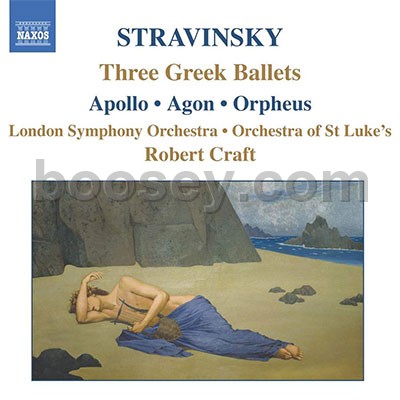2.picc.2(II=corA).2.2-4.2.2.0-timp-harp-strings
Abbreviations (PDF)
Boosey & Hawkes
The translucent scoring and evanescent lyricism of this ballet – a cousin to Apollo (who appears at the close to "raise heavenward Orpheus' song") – confer a distinctive beauty. Even the Furies are spectral and restrained. Orpheus's pleading lyre is memorably translated as a solo harp. Stravinsky's retelling of the famous myth connects to a rarefied lineage of musical incarnations also including the Orpheus operas of Monteverdi and Gluck – and (a possible companion piece) Beethoven's Fourth Piano Concerto, in which the solo piano, pleading for Eurydice, pacifies the angry string choir of the second movement.
Repertoire note by Joseph Horowitz
In 1946, in the wake of the Second World War, Stravinsky and Balanchine, now both resident in the USA, turned to Apollo’s son Orpheus for their next balletic collaboration. It is the lamenting Orpheus who is encountered at the start of this ballet, almost as if picking up the melancholic mood left suspended two decades earlier at the end of their Apollo. ‘Orpheus weeps for Eurydice. He stands motionless, with his back to the audience.’ We hear his lyre at the beginning and end of the score, represented by the sounds of the harp, playing falling lines of lament. It is as if Stravinsky is speaking personally here, lamenting the death of his daughter and first wife as well his mother just before he left for America. Balanchine and Stravinsky worked side-by-side on the scenario. Music and choreography emerged simultaneously. The scenario starts with Orpheus weeping at Eurydice’s funeral and ends with an apotheosis where Apollo appears, ‘wrests the lyre from Orpheus and raises his son heavenwards’. The music throughout is restrained, distanced, formal, with a predilection for counterpoint. The designer chosen for the premiere production was Isamu Noguchi, a sculptor whose abstract geometric sets, costumes and masks perfectly matched the distilled, ritualistic purity of Stravinsky’s music and Balanchine’s dances. Orpheus can be paired effectively in concert performances with other of Stravinsky’s works on classical themes.
Repertoire note by Jonathan Cross

London Symphony Orchestra/Robert Craft
Naxos 8.557502

